
Table of Contents
If you’ve ever suffered from the dreaded stiff neck, aching shoulders, or sore lower back after a long work day, then you’re no stranger to the importance of choosing an office chair that’s comfortable and suitable for your individual needs. But how do you determine which type of chair is best for you? What features should you be keeping an eye out for? And what common mistakes should you avoid?
In this blog post, we’ll walk you through the key considerations for selecting an office chair that checks all the boxes for maximum comfort and ergonomics. We’ll cover features like the type of material, adjustability, special features, and more—all in pursuit of the holy grail of office chairs: a comfortable, ergonomically healthy seat that’s designed for the long haul.
When finding an ergonomically designed office chair, comfort and support should be the top priorities. Ergonomic design allows one to align their body in a healthy and supportive posture, reducing the strain on muscles and joints. Different ergonomic designs can vary between manufacturers, but generally they’ll contain features like adjustable armrests and lumbar support to promote good posture.One of the frequently debated points when it comes to ergonomics is the idea of a “one-size-fits-all” approach.
While some people argue that a single ergonomic chair design could meet the needs of all people, others point out that an adjustable chair is necessary for accommodating different body types. Finding a chair with adjustable height, arms and back is recommended for maximum comfort, as this will allow you to adjust it to fit your exact requirements.When looking at ergonomically designed seating options for an office chair, lumbar support should also be considered.
This kind of support helps promote proper alignment and reduce strain on the spine. Many chairs now come with additional padding in the lower back area to help users keep their posture straight while sitting comfortably.Adjustability and lumbar support are two key elements of an ergonomically designed office chair that improve both comfort and support.
Adjustable features can be extremely helpful in allowing users to get into a comfortable seated position, while lumbar support can reduce strain on the spinal cord over long periods of sitting. Now let’s look further into how adjustable features and lumbar support influence comfort and ergonomics in more detail in the following section.
Adjustability and Lumbar Support
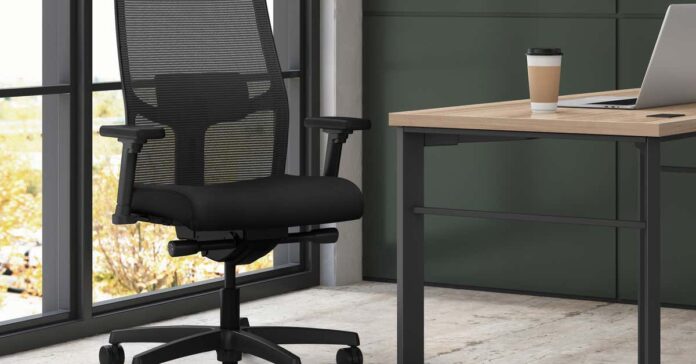
Adjustability is an important feature for any of the most comfortable office chairs. Depending on the user’s size and shape, different settings can enable the most comfortable and ergonomic position when seated. The chair should be adjustable in height, armrest, back angle, back height, seat depth, tilt tension, and lumbar support.Lumbar support is essential for long periods of sitting or intensive computer use.
Users who have pre-existing back or shoulder issues would benefit from a built in lumbar support that can be adjusted to fit their unique needs. Adjustable lumbar support encourages better posture while helping to decrease tiredness and discomfort. On the other hand, many users would prefer no lumbar support at all.
Some argue that lumbar support can be restrictive and uncomfortable if it does not fit exactly right.No matter what level of adjustability is desired, users should make sure their office chair is adjustable to suit their individual preferences.Next, we’ll discuss seat height, depth, and cushioning – all key factors in providing comfort while sitting for extended periods of time.
Seat Height, Depth, and Cushioning

The seat height, depth, and cushioning all play an integral role in achieving optimal ergonomics and comfort while working. Ideally, a chair should be adjustable so that users can customize it to meet their individual preferences.The goal is to ensure the feet are flat on the floor and the hips are slightly higher than the knees when seated.
To achieve this, chairs should have a minimum seat height of 16-20 inches, with a maximum at 22 inches or higher depending on the user’s legs and preferred sitting position. The seat depth should also be adjustable and accommodate one’s personal body size and proportions.
An ideal seat should enable someone to sit back far enough so that there is a gap of 2-4 inches between the back of the knee and the front edge of the seat.The cushioning of the chair is also a major factor for supporting ergonomic posture and providing comfort throughout long periods of sitting.
Generally, more cushioning provides better support for those who sit for extended periods; however, too much cushioning can cause slouching, which results in poor posture. Look for chairs with adjustable cushions — memory foam is often considered the best type for providing both support and softness.
When it comes to seat height, depth, and cushioning, finding a balance between comfort, ergonomics, and practicality is key. With these features properly set up according to one’s unique size and shape, they should be ready to move onto the next step: making practical considerations for their office chair.
Practical Considerations for Your Office Chair

When making a purchase decision for office furniture, practical considerations are just as important as comfort and ergonomic factor. Your choice of chair should align with the practical needs of your workplace, taking into account everything from budget to aesthetic design.First and foremost, consider the price range that best fits the size and scope of your operation.
Budget-friendly chairs can be quite suitable for start-ups and those operating on tight budgets. There is no need to splurge on a luxury piece if it’s not in your budget or if other solutions better meet your needs. If you need multiple chairs for multiple employees, it might be worth investing more upfront for convenience in terms of assembly time.The available space in your office is an important consideration since a chair must fit without being too large or small for comfortable use.
A chair that is too big may cause clutter, while one that is too small likely won’t provide sufficient support or comfort options. Also keep in mind whether there will be any mobility requirements; select chairs with wheels only if needed, lest the chair become uncomfortable to move around without them.Lastly, consider the interior design and aesthetic of your office when selecting a chair — it must fit with the style and look already established within the room.
It helps to bring in samples when looking at pieces, so you can see how they look next to surrounding furniture items and wall colors before making a selection.Overall, practical considerations are equally important as ergonomic factors when selecting an office chair. When making your purchase decision, take into account necessary factors such as price range, available space, mobility requirements, and interior design aesthetics.
With all these considerations in mind, you’ll be able to choose a suitable office chair that serves both practical and ergonomic demands.With the practical considerations out of the way, it’s time to focus on quality of materials and construction — our next section discussing what features to look for in fabric and build quality.
Essential Information
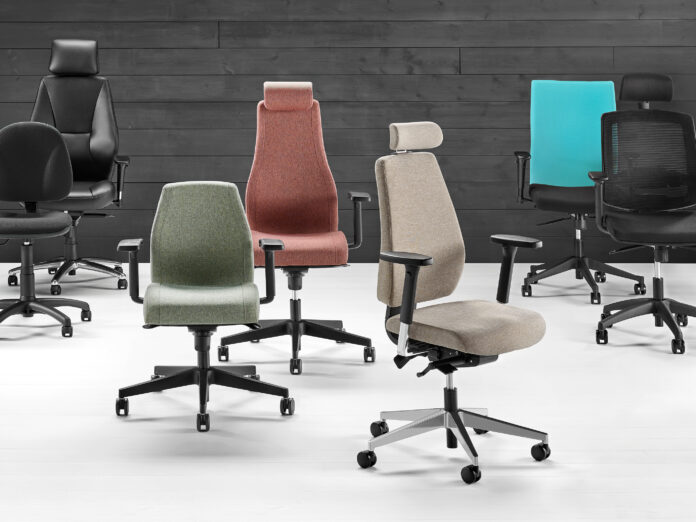
When considering which office chair to buy, one must weigh practical considerations such as cost, size, mobility and aesthetics against ergonomic factors like fabric and construction quality. Factors such as budget, available space, mobility requirements and interior design should all be taken into account when making the purchase decision. With these considerations in mind, one can choose an office chair that meets both practical and ergonomics needs.
Quality of Materials and Construction
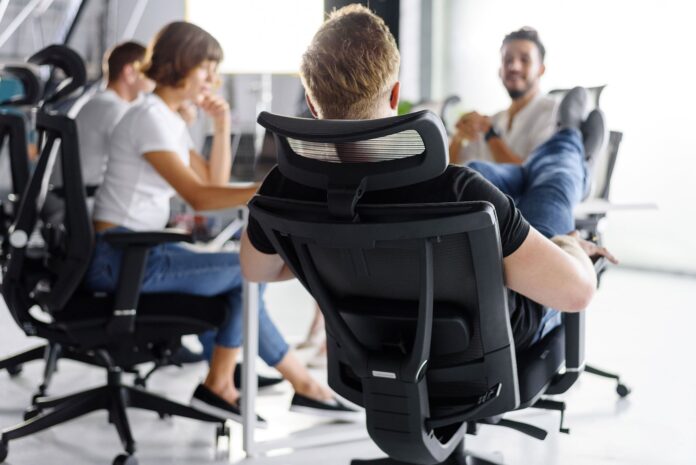
When selecting an office chair, the quality of materials used and the overall construction are an important factor in how comfortable it will be. Look for chairs made with high-quality fabric, foam cushioning and strong leathers that are designed to offer firm support and resist sagging.
Pay special attention to seating areas, armrests and any lumbar support features as these areas take additional wear and need to stand up to long hours of use.Leather chairs often have a luxurious look and feel, but require regular care since they are prone to cracking and drying over time. Fabric chairs tend to be more affordable but also can trap dirt easily requiring frequent cleaning.
Mesh chairs allow air flow which allows your body temperature to stay regulated during long days of work, but may not offer adequate support for users who need more cushioning due to joint pain.It is also important to consider durability when selecting the materials used because cheap materials tend to break down faster, making way for an uncomfortable seat.
Ideally, look for chairs made from high quality metals like stainless steel or aluminum which will provide a durable frame yet supple enough movement that you won’t feel like you’re locked into one spot during the work day.The quality of materials used in an office chair can make a big difference in overall comfort as well as potentially lasting longer – so don’t skimp on this part of your purchase decision!
Ultimately it is important to choose a chair that visually appeals while providing necessary support and comfort levels for the user while at their desk or working environment.
Armrests: essential or not? The next step in choosing the right office chair comes down whether armrests are necessary or if other ergonomic factors should take precedence when considering comfort aspects.
Armrests: Essential or Not?
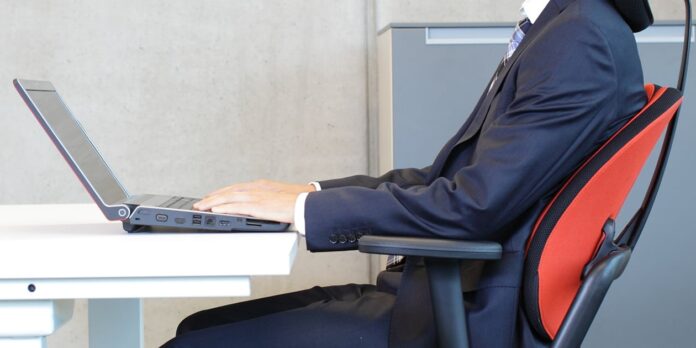
Armrests on an office chair can be essential for providing additional comfort and support for your arms when seated. Armrests should always be adjustable, so the user can choose the height and positioning as needed. The armrests should also have a curved or soft padding to make sure that your arms fit comfortably on them.
When considering an armrest, make sure it’s not placement is too wide for the width of your shoulders, that could cause discomfort.However, armrests are not a necessity for everyone and are not suitable for everyone’s unique body type. People with shorter arms or those who use their desks to rest their elbows might find armrests cumbersome or uncomfortable.
While this varies from person to person, using adjustable armrests while you are seated can assist in improving posture and reducing strain on your neck and back, thus ultimately improving comfort levels.Visual Aesthetics and Style is an important factor when it comes to finding a comfortable yet stylish office chair. A chair with the right design aesthetics will complement the rest of your office decor and provide an environment that promotes productivity and focus.
- According to a study published in 2015, ergonomic office chairs with adjustable lumbar support can help reduce low back pain.
- A 2016 study showed that office chairs with armrests and adjustable seat heights can improve posture, reduce neck and shoulder strain, and increase productivity.
- A 2018 study found that office chairs with a Synchro-Tilt mechanism that lets you lean back at a comfortable angle can help promote better blood circulation and reduce fatigue levels while working.
Visual Aesthetics and Style
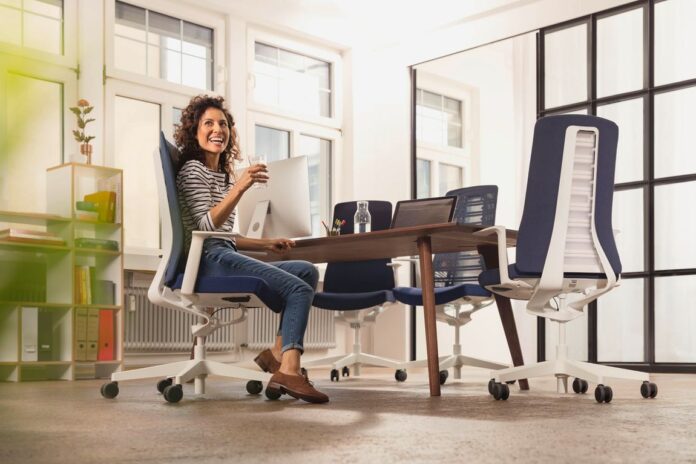
Visual aesthetics and style are important considerations when selecting an office chair. The look of the chair should be appropriate for its intended purpose; while a designer chair may catch your eye, it might not be appropriate for everyday office use. Similarly, a chair with sleek lines and minimalistic design could be appealing but if it doesn’t come in the right color or fabric to match your office, then it’s not the best option for you.
On the other hand, installing a stylish chair into your workspace can add an element of sophistication and character to the room. An aesthetically pleasing office chair can make all the difference to a room’s decor, adding interest and cohesion to the overall space. Furthermore, many people find that having an attractive chair that is comfortable to sit in creates motivation and helps them to feel energized at work.
Ultimately, whether you choose a stylish office chair or one with more traditional styling, it should be a reflection of you and your tastes as well as meeting your ergonomic needs. It is important to consider both function and form when selecting an office chair if you want it to last.The next section will explore how wheels and swivel range can affect the functionality of an office chair, allowing you identify the most comfortable model for your particular needs.
Wheels and Swivel Range
When it comes to office chairs, wheels and swivel range should both always be considered. Wheels allow you to move around easily, while the swivel range lets you turn the chair in any direction.When looking at office chairs with wheels, it is important to consider whether the wheels will be able to fit over your flooring. If your office has carpets or tile floors, you will likely need a chair with wheels designed specifically for these surfaces.
Regardless of the type of flooring, try to choose a chair that has more than one wheel on each corner; this will provide greater stability and support. Additionally, make sure that all of the wheels are securely locked before sitting in the chair – this will help prevent any unintended movement.Swivel range is also an important factor when selecting an office chair. It can determine how much freedom of movement you have with your seat, making it easier to reach various items without having to move out of the chair completely.
Generally speaking, a wider swivel range is better; if your office requires frequent shifts from one task to another, consider choosing a chair with 360-degree rotation for maximum versatility.Finally, look for chairs that combine both desirable wheel designs and swivel ranges for optimal comfort and convenience. These options will provide the best of both worlds: efficient movement within the office and ergonomic support while seated at the desk.
Choosing the right chair for your office is essential to ensure lasting comfort while working. The next section will go into detail regarding what features to look for in order to pick out a quality piece of furniture that fits both your working habits and home décor.
Choosing the Right Chair For Your Office
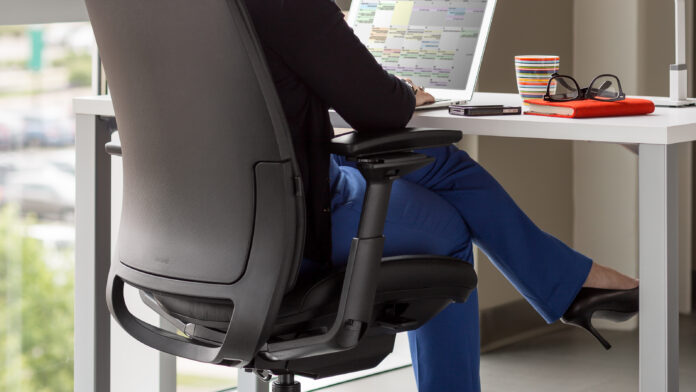
When it comes to choosing an office chair, there are a variety of important factors to consider. Of primary importance is comfort – without it, you won’t be able to perform at the level you need. Ergonomics is also important, as it will ensure that your body is properly aligned and not strained over time.It’s essential to take the time to figure out which type of chair and features will work best for you, depending on your individual needs and preferences.
Here are some considerations when shopping for an office chair:Price: The cost of the chair should fit within the budget you have set aside for office furniture. Before making any purchase, determine how much you can afford to spend, as well as additional costs such as delivery and assembly if applicable.Adjustability: Make sure your chair has enough adjustable components to suit your height and weight, such as armrests, seat depth, lumbar support and tilt tension control.
Adjustable chairs serve a greater range of body types and offer better support during long working hours.
Material: Different materials mean different levels of comfort, durability, wear-resistance, breathability and affordability. Common materials for office chairs include mesh fabrics, leather upholstery or plastic shells with fabric cushions. The material should be adapted to both the usage volume and environmental conditions of your workplace’s atmosphere.
Armrests: Armrests come in all shapes and sizes, ranging from traditional armrests that rise above the seat surface to ones that are padded with various levels of cushioning. While optional on certain models of chairs, having armrests provides stability while seated, which can help reduce strain on your back and shoulders during extended use.
Wheels/Casters: Wheels or casters are usually made from rubber or plastic and can vary in terms of size and design; depending on the floor surface they may improve mobility or grip more securely when needed. Consider your office environment when selecting casters; some wheels may not work well on carpeted surfaces while others might be compatible with tile or wood floors.
Overall Quality: Look for a chair with a sturdy frame that won’t wobble or break easily after continuous use. Test out key areas like recline control or adjustability before making a purchase since this will help determine what level of movement and support is available in certain models.
Examine other areas as well such as wheels/casters, armrests, headrests and lumbar supports to make sure they will meet your needs properly after prolonged sitting hours.The most important thing when choosing an office chair is finding one that fits your specific needs while also providing optimum levels of comfort and ergonomic support.
There may not be one perfect solution for everyone – it all depends on individual preferences; what works great for one person might not work nearly as well (or at all) for someone else due to differences in body types or personal tastes. Take into account all the variables mentioned above in order to make the best decision possible when it comes to selecting an office chair for your workplace!
















